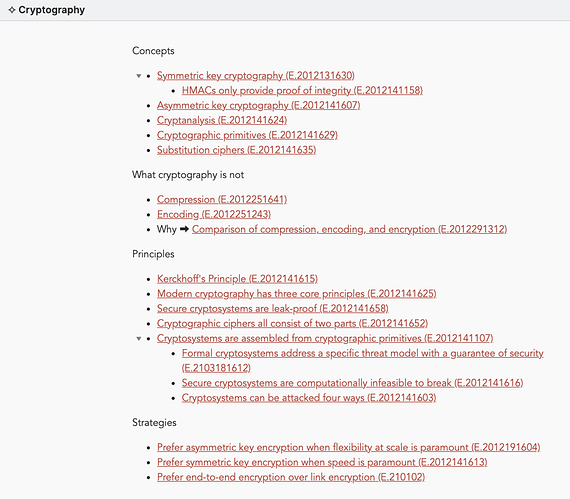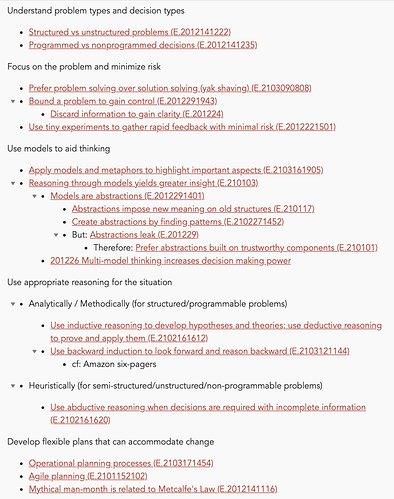Remember - Take source or literature notes and put them in Obsidian to review. You could also make flash cards from Quizlet or Anki. I’m trying to do more with space repetition so I remember instead of cramming and dumping information.
Understand - Add your own notes to the highlights. Doesn’t mean you actually understand but you are starting to think about it and not just memorize.
Apply - This might be making a map of content and organizing the knowledge a little more.
Analyze- This is connecting more ideas and adding more personal notes. Connecting notes together that are outside of the original domain. This is seeing how it relates in the wider context.
Evaluate - This step is figuring out what information you agree with or disagree with and why. How will you use this information?
Create - Use this new knowledge to write code, build something, write a blog post, create a video…
Basically it would be for revisiting your notes and making sure you are progressing forward from this is a flash card fact to adding comments to connecting ideas to evaluating what you think is correct and incorrect (and why) and then making something at the end even it if it is just for you.
Even though my notes are very long, the idea of having atomic notes has been helpful for me. When you are looking at something like Bloom’s Taxonomy or learning objectives, I think it is best to look at them at the smallest scale possible. I could be trying to learn what is a variable in programming. I would break that down to what is an integer variable in C++.
It is also helpful for me to think of depth of knowledge or different perspectives. You can revisit the same topic several times and each time go up Bloom’s pyramid again.
Let’s look at gravity (large topic, not atomic) as an example.
As baby, you experiment and test and figure out that you can drop things.
In middles school, you probably learn about gravity and go all the way to making some experiments with things rolling down hills or maybe throwing a ball up and watching it stop and the top and come back down.
In high school, maybe you take algebra based physics. Then you learn about uniform accelerated motion, the gravitational constant, or even orbits. You do some problems and maybe some experiments.
In college, you learn calculus and look at gravitational potentials.
Maybe you advance to learning relativity and gravity waves.
Maybe you move on to string theory.
The point is that each time you revisited gravity as a topic you probably climbed Bloom’s pyramid again. That’s why I try to break it down to small facts to move up the pyramid.
These are my ideal steps:
- Take notes from a source
- Add my own contextual understanding. Add my thoughts, comments, if I agree or disagree, write down questions, note what needs to followed up with more research, and so on.
- Make flash cards for spaced repetition.
- Aggregate ideas on maps of content.
- Connect ideas with each other through back linking and embedding.
- Make something


